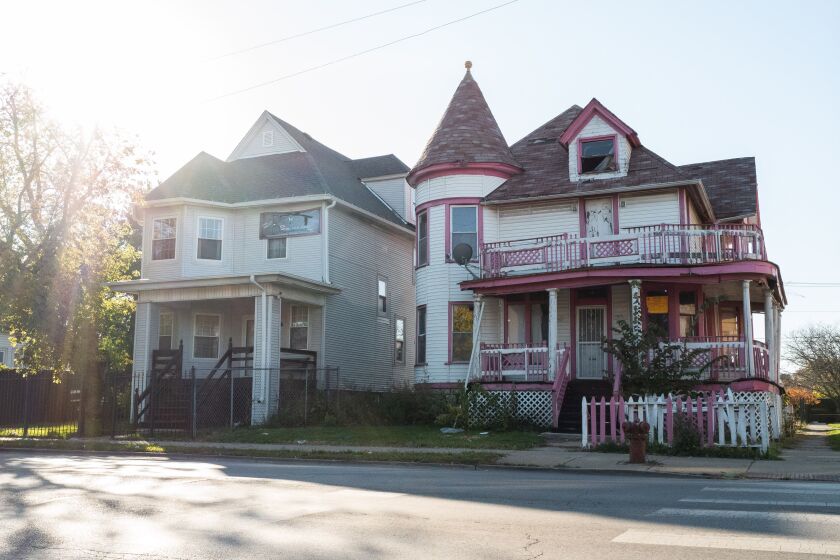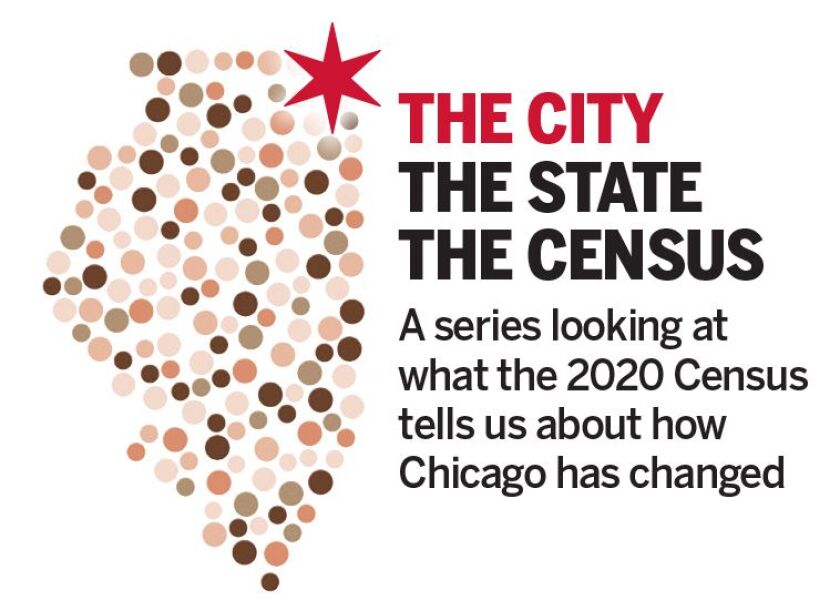Anthony Simpkins remembers when the Greater Englewood neighborhood was a thriving Black community with more than 100,000 residents and a commercial strip that rivaled downtown’s shopping district.
“It was one of the most active commercial strips in the city of Chicago, and then — over decades — that all deteriorated,” said Simpkins, president and CEO of Neighborhood Housing Services of Chicago.
“The mall was demolished, and there were literally hundreds and hundreds of properties — both homes and apartment buildings — that were torn down, and all that remains are the swaths of vacant land.”
In the past 10 years, the exodus of Black families has continued in Chicago, which was once a prime destination for Black Americans fleeing the violence and racism of the Jim Crow South. West Englewood and Austin have lost the most Black residents in the past 10 years, according to the 2020 census.
The Chicago Sun-Times shared the stories of Black Chicagoans who had left the city and how their lives improved — but is there a way to stop this 30-year decline in population?
Community leaders say in order to bring Black residents back, the city must devote more resources to closing gaps in homeownership, wages and life expectancy between Black and white Chicagoans, though admittedly it will be no easy feat.
Simpkins said there has been “significant investment” happening in Greater Englewood in the past six years, and he hopes people will notice the positive change happening already.
That includes the opening of Englewood Square retail center at 63rd and Halsted streets — home to a Whole Foods Market, a health clinic and clothing stores. The city also has helped create affordable housing, with the new Montclare Senior Residence of Englewood, 6332 S. Green St., and Hope Manor Village Veterans Housing, 6002 S. Halsted St. And in May, the city advanced a $20.9 million plan from developer Keith B. Key Enterprise to bring more affordable housing along Halsted Street.
Simpkins said those investments should be celebrated, but homeownership is truly the way to bring residents back to Greater Englewood, which includes both the Englewood and West Englewood community areas — and Chicago at large.
“Homeownership is critically important when you are talking about a neighborhood like Englewood because homeownership not only removes blight and improves the neighborhood sort of physically, it also is an opportunity for families to create generational wealth since that is the main driver in America for families to do so,” he said.
Boosting homeownership also drives up the neighborhood’s density — key to a thriving community, because homeownership increases foot traffic along the neighborhood’s commercial strip. There can’t be one without the other, Simpkins added.
Research from the Institute for Housing Studies shows predominantly Black census tracts in Chicago saw a loss of homeowner households from 2010 to 2019. The number of owner-occupied households in Black neighborhoods dropped 13.6%, compared to a 2.8% decrease for the entire city.
Despite the decrease in residents, Bradly Johnson said he has never felt more hopeful about Austin’s future, particularly because of collaborations between various community organizations.
Johnson, director of external affairs for BUILD Inc., said Black residents have been leaving not just Austin but the entire city for opportunities elsewhere, while others want to get away from violence. Still, he points to a 70-page quality-of-life plan for Austin that he and other community organizations worked on as an example of how the West Side community can move forward.
The plan lays out ideas ranging from a manufacturing training center to helping residents get better-paying jobs to training parents to become involved in local school councils.
“If we could create the opportunity to do something creative to increase homeownership and access to homeownership, to new business development and incubation, education and also help Black residents get a foothold in the trades, which are pretty much homogenous because of the unions and historically how they are set up,” Johnson said. “If we could address those things, I think that you’ll see a turnaround in the Black population.”

Yolanda Anderson and her family left Austin after their iconic pink and white Victorian home was sold earlier this year. Anderson said her family left their beloved house after they were unable to secure funds to do the extensive renovations needed at the Austin property. It’s one reason why Black residents have left some Chicago neighborhoods.
Pat Nabong/Sun-Times
Sharif Walker thinks collaboration between organizations is how communities like Austin begin to see quality of life improve for Black residents.
Walker, president and CEO of Bethel New Life, said his nonprofit organization, which provides affordable housing for seniors, worked with other organizations to create a community garden that produced fresh vegetables. Walker said they also teamed up to do cooking demonstrations for the seniors in their buildings.
It’s one step toward reducing the life expectancy gap between Black and white residents in Chicago, Walker said.
Black residents in Chicago on average live 71.4 years, compared with 80.6 years for non-Black city residents, according to a report released earlier this year by the Chicago Department of Public Health.
Nicole Acree, 29, grew up in Austin but moved to Atlanta to start her professional career. She has deep ties to Chicago’s West Side and would like to return there one day to bring the arts and music programming she thinks is necessary to help younger generations thrive.
“I want people to realize that what we have could truly be magical if we all come together as one city, not just multiple sides; but if we come together as one city, we could really change some things,” she said.
Jesse Howe and Andy Boyle contributed to the data analysis for this report.
Elvia Malagón’s reporting on social justice and income inequality is made possible by a grant from The Chicago Community Trust.







